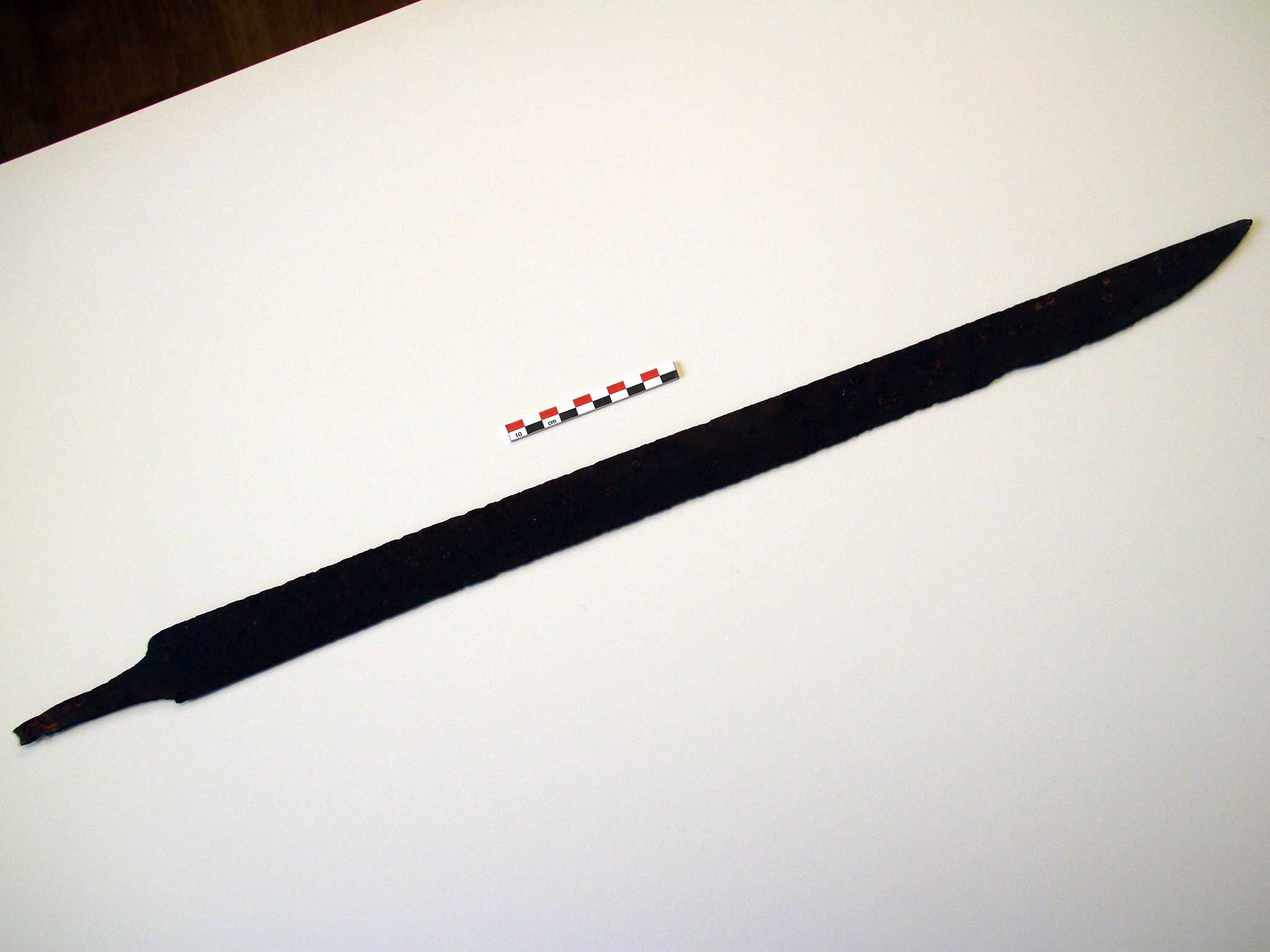Hiker finds 1,200-year-old Viking sword in Norway
Archaeologists are amazed at the sword's condition

Your support helps us to tell the story
From reproductive rights to climate change to Big Tech, The Independent is on the ground when the story is developing. Whether it's investigating the financials of Elon Musk's pro-Trump PAC or producing our latest documentary, 'The A Word', which shines a light on the American women fighting for reproductive rights, we know how important it is to parse out the facts from the messaging.
At such a critical moment in US history, we need reporters on the ground. Your donation allows us to keep sending journalists to speak to both sides of the story.
The Independent is trusted by Americans across the entire political spectrum. And unlike many other quality news outlets, we choose not to lock Americans out of our reporting and analysis with paywalls. We believe quality journalism should be available to everyone, paid for by those who can afford it.
Your support makes all the difference.A hiker has found a 1,200-year-old Viking sword while enjoying a short fishing trip in Norway.
Walker Gøran Olsen apparently sat down to rest on the border of Telemark in Haukeli, central southern Norway, when he discovered the ancient sword.
It was found in such good condition, archaeologists have suggested if the sword’s grip was replaced and the metal polished it could still be used today.
The sword is 77cm long, which indicates it was forged around 750-800AD.
“The sword was found in very good condition. It is very special to get into a sword that is merely lacking its grip,” Jostein Aksdal, an archaeologist with Hordaland County who examined the find, told the local.no.
He plans to lead a dig in the area in the coming spring, hopefully to discover more unfound artefacts. “If we find several objects, or a tomb, perhaps we can find the story behind the sword.”
Although a common sword in Western Norway during that period, Mr Askdal said the sword was a “costly weapon” and likely to have been used to “show power”.
It will now be sent to The University Museum of Bergen.
Join our commenting forum
Join thought-provoking conversations, follow other Independent readers and see their replies
Comments